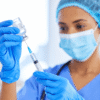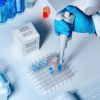Medical diagnostics, the cornerstone of modern healthcare, have witnessed a remarkable evolution in recent years. Cutting-edge technologies and innovative techniques are transforming the way diseases are detected, diagnosed, and treated. Moreover, this article explores some of the latest advancements in medical diagnostics, highlighting their potential to revolutionize patient care.
1. Advanced Imaging Technologies
- MRI and CT Scans: These imaging techniques provide detailed, non-invasive views of the body’s internal structures. Furthermore, they are invaluable for diagnosing a wide range of conditions, including tumors, fractures, and infections.
- Ultrasound: Ultrasound imaging uses sound waves to create images of internal organs. In addition, tt is commonly used for prenatal care, diagnosing thyroid conditions, and examining the heart.
- X-rays: While a classic imaging technique, X-rays remain essential for diagnosing bone fractures, dental issues, and certain lung conditions.
2. Laboratory Testing
- Hematology: Hematology tests analyze blood cells, platelets, and clotting factors to diagnose conditions like anemia, leukemia, and infections.
- Clinical Chemistry: These tests measure the levels of various substances in the blood, such as glucose, cholesterol, and electrolytes. They are crucial for monitoring overall health and diagnosing conditions like diabetes and kidney disease.
- Microbiology: Microbiology tests identify and analyze microorganisms, such as bacteria, fungi, and viruses, to diagnose infections.

3. Endoscopy
- Gastroenterology: Endoscopy procedures, like colonoscopy and endoscopy, allow doctors to examine the digestive tract using a flexible tube with a camera. In addition, they are used to diagnose conditions like ulcers, polyps, and cancer.
- Bronchoscopy: This procedure involves examining the airways using a bronchoscope, which can be used to obtain tissue samples for biopsy.
4. Radiology
- Interventional Radiology: This specialized field uses imaging techniques to guide minimally invasive procedures, such as angioplasty, biopsy, and drainage of abscesses.
- Nuclear Medicine: Nuclear medicine uses radioactive substances to diagnose and treat diseases. It is used for imaging organs like the heart, thyroid, and bones.

5. Biopsy
- Fine Needle Aspiration (FNA): FNA involves using a thin needle to extract cells or fluid for examination. It is commonly used to diagnose breast lumps, thyroid nodules, and lymph node abnormalities.
- Core Needle Biopsy: This procedure obtains larger tissue samples using a thicker needle, allowing for more accurate diagnoses.
6. Latest Advancements
- Liquid Biopsy: This non-invasive technique involves analyzing circulating tumor cells or DNA in blood samples to detect and monitor cancers.
- Artificial Intelligence (AI) in Diagnostics: AI-powered algorithms are being used to analyze medical images and data, improving accuracy and efficiency in diagnosis.
- Point-of-Care Testing: Portable devices are enabling rapid testing for various conditions, such as diabetes and infectious diseases.
7. Personalized Medicine
- Genomics and Genetic Testing: The analysis of an individual’s genetic makeup can help identify risk factors for certain diseases and tailor treatment plans.
- Proteomics: Studying proteins in the body can provide insights into disease processes and aid in the development of targeted therapies.
8. Telemedicine and Remote Diagnostics
- Virtual Consultations: Telemedicine allows patients to consult with healthcare providers remotely, reducing the need for in-person visits.
- Remote Monitoring Devices: Wearable devices and other remote monitoring tools can collect health data and transmit it to healthcare providers for analysis.
9. Digital Pathology
- Virtual Microscopy: Digital pathology allows pathologists to view and analyze tissue samples on a computer screen, improving efficiency and collaboration.

10. Emerging Technologies
- Nanotechnology: Nanotechnology is being explored for the development of new diagnostic tools and targeted therapies.
- Organ-on-a-Chip: These devices simulate human organs and tissues, providing a platform for drug testing and disease modeling.
Conclusion
The field of medical diagnostics is experiencing a period of unprecedented innovation. These latest advancements have the potential to revolutionize healthcare by improving accuracy, speed, and accessibility. Similarly, advancements in medical diagnostics have dramatically improved the accuracy and speed of disease detection. Likewise, as technology continues to advance, we can expect even more groundbreaking developments in medical diagnostics, leading to better patient care and healthier outcomes. Advancements in medical diagnostics have transformed how we detect and treat diseases, leading to more personalized and effective healthcare.










